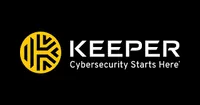A new, silent social engineering attack is being used by hackers – and your security systems might not notice until it’s too late
Malicious actors are already using FileFix technique in malware-delivery dummy runs, Check Point claims


Cybersecurity researchers at Check Point have identified a new, insidious social engineering technique that requires almost no user interaction.
The FileFix technique builds on an already widely used tactic called ClickFix, which according to Check Point tricks users into running malicious commands in the Windows Run dialog.
FileFix, meanwhile, opens a Windows File Explorer window from a web page and surreptitiously loads a disguised PowerShell command into their clipboard.
30% off Keeper Security's Business Starter and Business plans
Keeper Security is trusted and valued by thousands of businesses and millions of employees. Why not join them and protect your most important assets while taking advantage of this special offer?
“When the victim pastes into the Explorer address bar, the malicious command executes,” researchers explained. “This attack relies not on software vulnerabilities but on exploiting routine user actions and trust.”
The researchers added that they have now observed known bad actors using FileFix in the wild. While the payloads are currently benign, they suggest this signals “an imminent shift to delivering real malware”.
“The rapid rise of the ClickFix technique in 2025 highlights that social engineering remains one of the most cost-effective and enduring methods cyber criminals use to breach defenses,” the researchers said.
“The fact that FileFix is already being tested and used in the wild mere days after its public disclosure shows how quickly attackers adopt new techniques and adapt to the evolving cyber threat landscape.”
Sign up today and you will receive a free copy of our Future Focus 2025 report - the leading guidance on AI, cybersecurity and other IT challenges as per 700+ senior executives
Commenting on the Check Point findings, Dray Agha, senior manager of security operations at cyber security firm Huntress, said: “Threat actors [are] rapidly iterating to leverage foundational Windows workflows, making defenses that much harder to deploy”.
“By tricking users into 'pasting a path,' attackers execute malicious PowerShell without triggering standard warnings,” he added.
Agha warned that Huntress has also seen FileFix being used “aggressively in the wild, and it is succeeding in tricking users in huge numbers”.
How to protect yourself from FileFix
Check Point has laid out recommendations for security professionals to help protect against this attack, including:
- Monitoring phishing pages that mimic popular services and security verification screens, especially those using “Cloudflare-like” templates
- Implementing and fine-tuning detection rules to flag suspicious clipboard activity or unusual PowerShell executions triggered by user actions.
- Staying current with emerging social engineering trends and regularly updating user training, incident response plans, and security playbooks.
It also suggests encouraging “a culture of verification”, which will lead users to confirm unexpected or unusual requests with the relevant IT or security team before acting.
Users themselves should be “highly suspicious” of any web page or email that asks them to carry out unusual activity – especially copying and pasting.
They should also be educated that legitimate websites and software “rarely require manual execution of commands to fix issues”.
Make sure to follow ITPro on Google News to keep tabs on all our latest news, analysis, and reviews.
MORE FROM ITPRO
- Hackers are using fake tool installers to dupe victims
- Why social engineering is such a problem and how your business can protect itself
- Hackers are using PDFs to impersonate big brands in a new threat campaign

Jane McCallion is Managing Editor of ITPro and ChannelPro, specializing in data centers, enterprise IT infrastructure, and cybersecurity. Before becoming Managing Editor, she held the role of Deputy Editor and, prior to that, Features Editor, managing a pool of freelance and internal writers, while continuing to specialize in enterprise IT infrastructure, and business strategy.
Prior to joining ITPro, Jane was a freelance business journalist writing as both Jane McCallion and Jane Bordenave for titles such as European CEO, World Finance, and Business Excellence Magazine.
-
 Google CEO Sundar Pichai says vibe coding has made software development ‘exciting again’
Google CEO Sundar Pichai says vibe coding has made software development ‘exciting again’News Google CEO Sundar Pichai claims software development has become “exciting again” since the rise of vibe coding, but some devs are still on the fence about using AI to code.
-
 15-year-old revealed as key player in Scattered LAPSUS$ Hunters
15-year-old revealed as key player in Scattered LAPSUS$ HuntersNews 'Rey' says he's trying to leave Scattered LAPSUS$ Hunters and is prepared to cooperate with law enforcement
-
 The Scattered Lapsus$ Hunters group is targeting Zendesk customers – here’s what you need to know
The Scattered Lapsus$ Hunters group is targeting Zendesk customers – here’s what you need to knowNews The group appears to be infecting support and help-desk personnel with remote access trojans and other forms of malware
-
 Impact of Asahi cyber attack laid bare as company confirms 1.5 million customers exposed
Impact of Asahi cyber attack laid bare as company confirms 1.5 million customers exposedNews No ransom has been paid, said president and group CEO Atsushi Katsuki, and the company is restoring its systems
-
 If you're not taking insider threats seriously, then the CrowdStrike incident should be a big wake up call
If you're not taking insider threats seriously, then the CrowdStrike incident should be a big wake up callNews CrowdStrike has admitted an insider took screenshots of systems and shared them with hackers, and experts say it should serve as a wake up call for enterprises globally.
-
 Shai-Hulud malware is back with a vengeance and has hit more than 19,000 GitHub repositories so far — here's what developers need to know
Shai-Hulud malware is back with a vengeance and has hit more than 19,000 GitHub repositories so far — here's what developers need to knowNews The malware has compromised more than 700 widely-used npm packages, and is spreading fast
-
 Security experts claim the CVE Program isn’t up to scratch anymore — inaccurate scores and lengthy delays mean the system needs updated
Security experts claim the CVE Program isn’t up to scratch anymore — inaccurate scores and lengthy delays mean the system needs updatedNews CVE data is vital in combating emerging threats, yet inaccurate ratings and lengthy wait times are placing enterprises at risk
-
 The US, UK, and Australia just imposed sanctions on a Russian cyber crime group – 'we are exposing their dark networks and going after those responsible'
The US, UK, and Australia just imposed sanctions on a Russian cyber crime group – 'we are exposing their dark networks and going after those responsible'News Media Land offers 'bulletproof' hosting services used for ransomware and DDoS attacks around the world
-
 Thousands of ASUS routers are being hijacked in a state-sponsored cyber espionage campaign
Thousands of ASUS routers are being hijacked in a state-sponsored cyber espionage campaignNews Researchers believe that Operation WrtHug is being carried out by Chinese state-sponsored hackers
-
 IBM AIX users urged to patch immediately as researchers sound alarm on critical flaws
IBM AIX users urged to patch immediately as researchers sound alarm on critical flawsNews Network administrators should patch the four IBM AIX flaws as soon as possible
